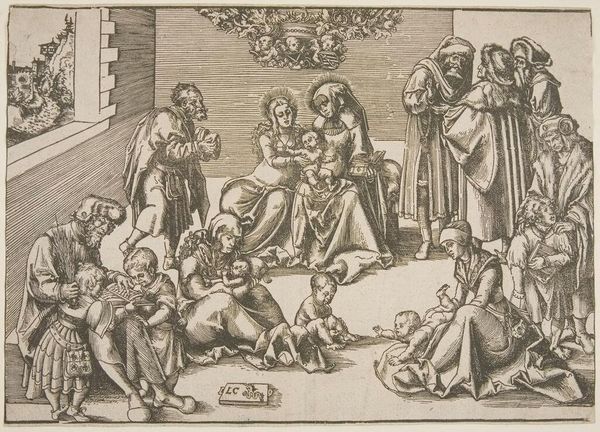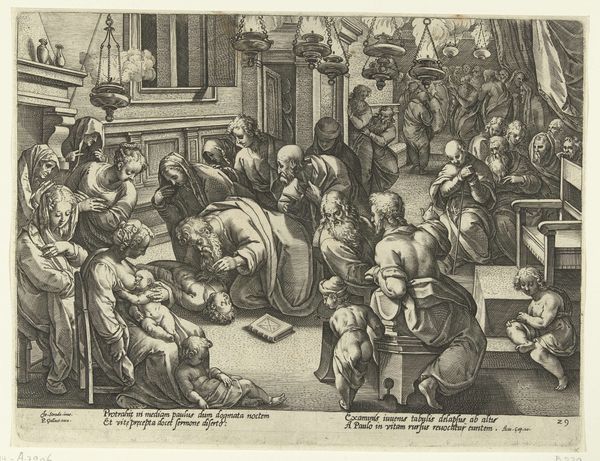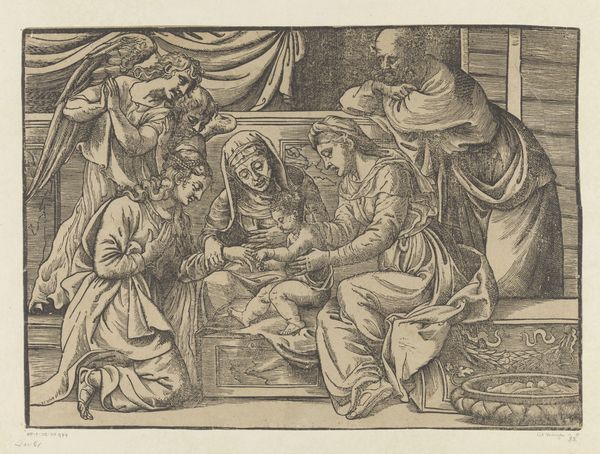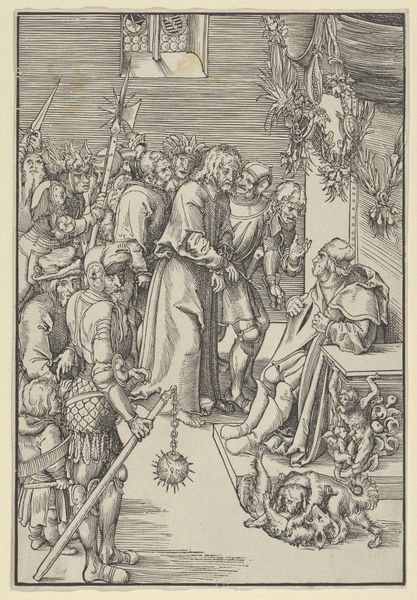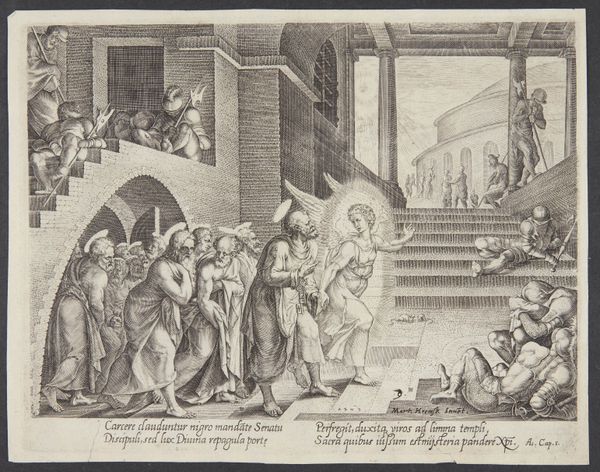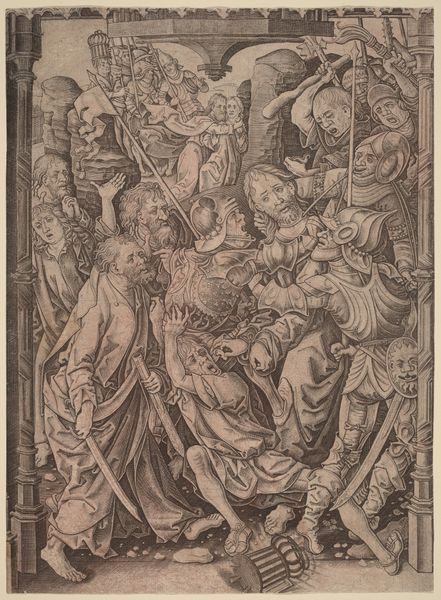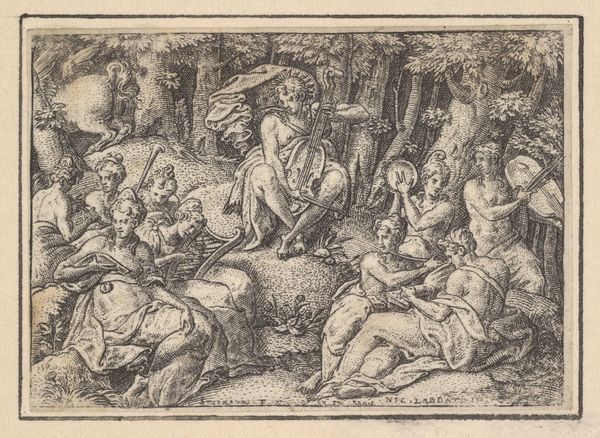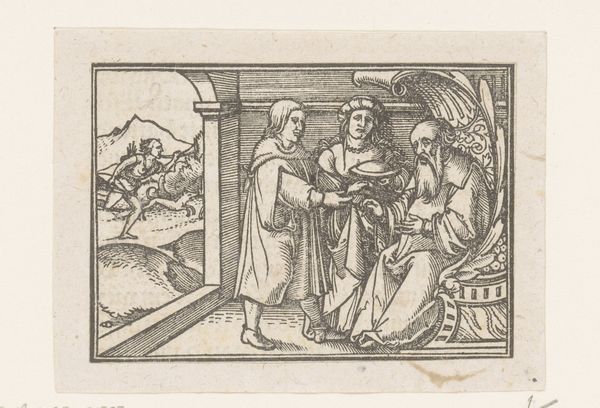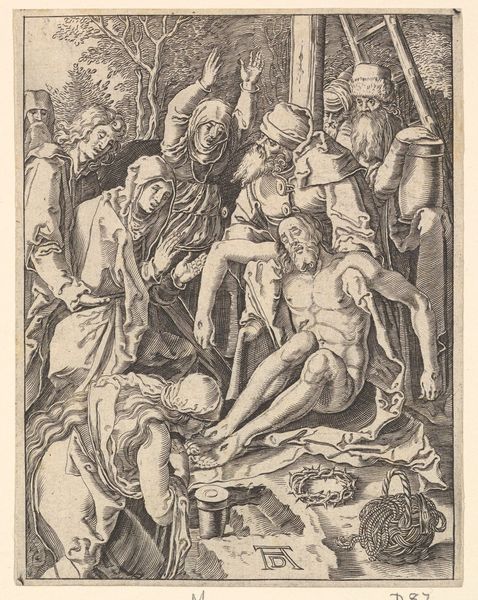
drawing, print, engraving
#
portrait
#
drawing
#
narrative-art
# print
#
figuration
#
group-portraits
#
history-painting
#
northern-renaissance
#
engraving
Dimensions: Sheet: 9 5/8 × 6 11/16 in. (24.5 × 17 cm)
Copyright: Public Domain
Curator: Here we have Lucas Cranach the Elder’s “The Holy Family and Kindred,” an engraving dating from the early to mid-16th century. Editor: It’s a tightly packed image! All these figures interwoven – I’m immediately struck by the sheer density of bodies and the detail achieved with such limited tonal range. Curator: The composition reflects a complex web of kinship and social relationships central to the concept of the Holy Family. Note how Cranach situates the Virgin Mary not in isolation, but as the matriarch within a larger, multigenerational group. This challenges conventional representations by highlighting the social and familial roles afforded to women, albeit within a religious context. Editor: Absolutely. The engraving process itself speaks to this too – the layering of lines, the physical labor to produce it. Consider that this wasn’t a unique artwork, but reproducible; its value lies in its function, circulating ideas and beliefs, a commodity born of labor, intended for mass consumption. How do you read that economically, its material production, the implied costs for patron and artist, the cost for an art lover? Curator: Precisely. And we must consider the historical moment. Cranach was a key artist of the Reformation, a movement that sought to democratize religious experience. By depicting the Holy Family amidst a wider network of relatives, Cranach makes divinity more accessible and human, resonating with Protestant calls to connect to a common family and ancestry. Editor: Looking at the process and social aspects makes me think, too, about artistic collaboration. What level of collaboration happened in Cranach's workshop to get to the final version of this print, and its distribution for broader circulation? And to continue along these lines, the clothing! Notice the folds and how this artwork really illustrates its time – how does the choice and method of representing this specific costuming inform perceptions of status or gender in the era the work was produced? Curator: I agree, it’s crucial to see those material elements as signifiers. And the engraving itself functions as a visual tool. In distributing accessible imagery, we see it furthering discussions about social hierarchies, challenging and reinforcing religious dogma, but all as the material output of its socio-cultural and religious period. Editor: So while “The Holy Family and Kindred” is an exceptional example of engraving craftsmanship, for me, seeing this piece in its context of labor makes the history it tells richer and relevant for all our histories today. Curator: I think seeing how it depicts and questions the conventional representations is what speaks most deeply. We begin to question how notions of family, womanhood and spirituality still resonate today.
Comments
No comments
Be the first to comment and join the conversation on the ultimate creative platform.
